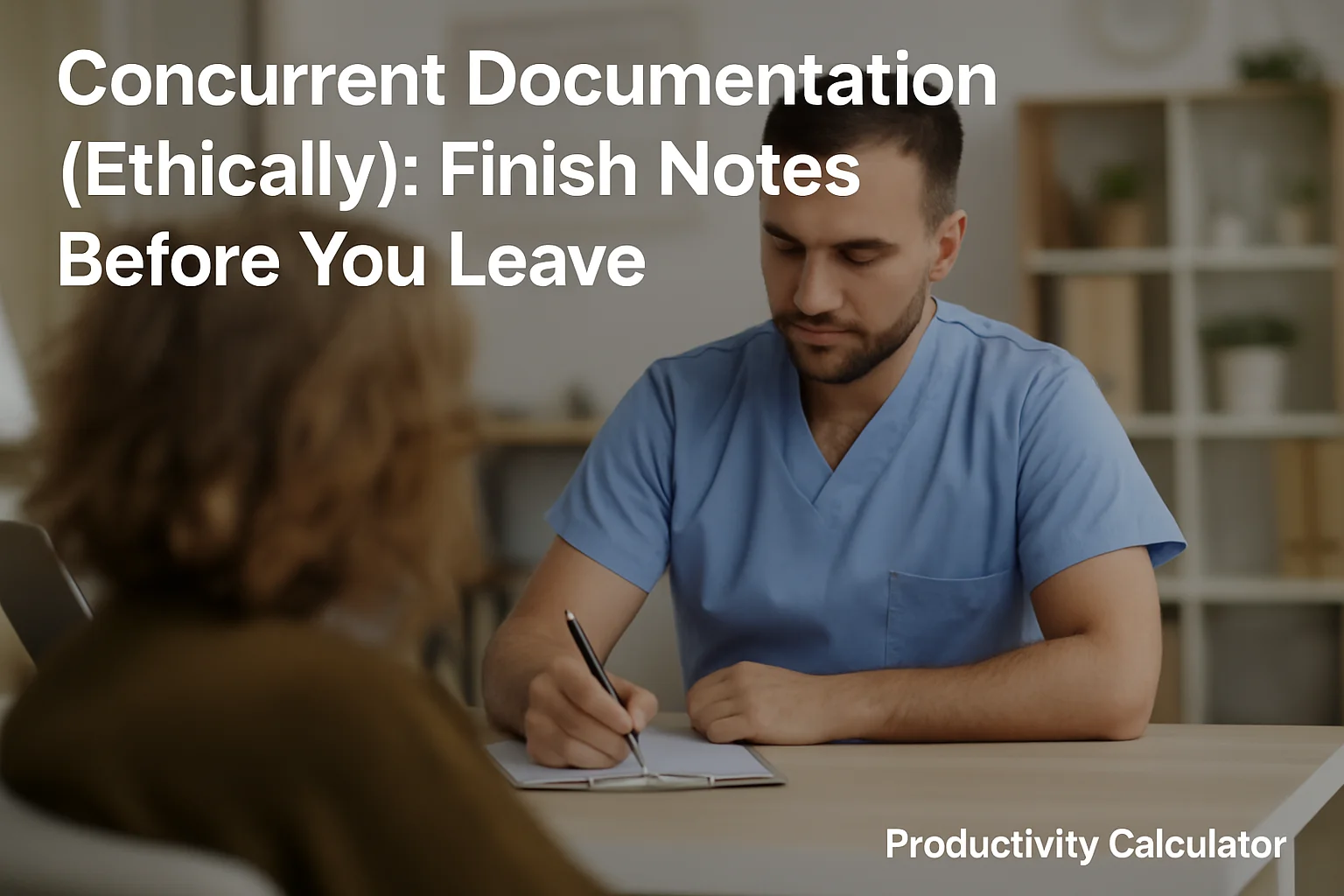Concurrent Documentation (Ethically): Finish Notes Before You Leave
Updated 2025-10-14

Best practices to document during care ethically and efficiently—what to capture live, what to finish post‑session, and how to frame it for patients.
Principles First
- Transparency: Tell the patient you’ll jot clinical observations to ensure accuracy.
- Focus: Type brief, factual elements only; keep dialog patient‑centric.
- Privacy: Angle screens away, avoid names on visible areas, and lock screens when moving.
What to Capture Live
- Objective measures (ROM, reps, sets, assist level).
- Direct quotes that matter for goals and education.
- Safety cues and immediate responses to interventions.
Finish Post‑Session
- Assessment synthesis and plan for next visit.
- Coding/charges per facility policy.
Sample Script
“I’ll note a few measurements while we work so your record is precise. I’m listening—please keep telling me how it feels.”
Try the Calculator: Use our Therapist Productivity Calculator to turn your billable minutes and productivity target into a precise end time.
Frequently Asked Questions
Is concurrent documentation allowed?
Generally yes, if done respectfully, without compromising care, and following your facility’s policies.
Will this slow the session?
Not if you limit live typing to brief, objective data and finish synthesis right after.
How do I handle privacy?
Use privacy screens, avoid PHI in visible areas, and lock devices when stepping away.